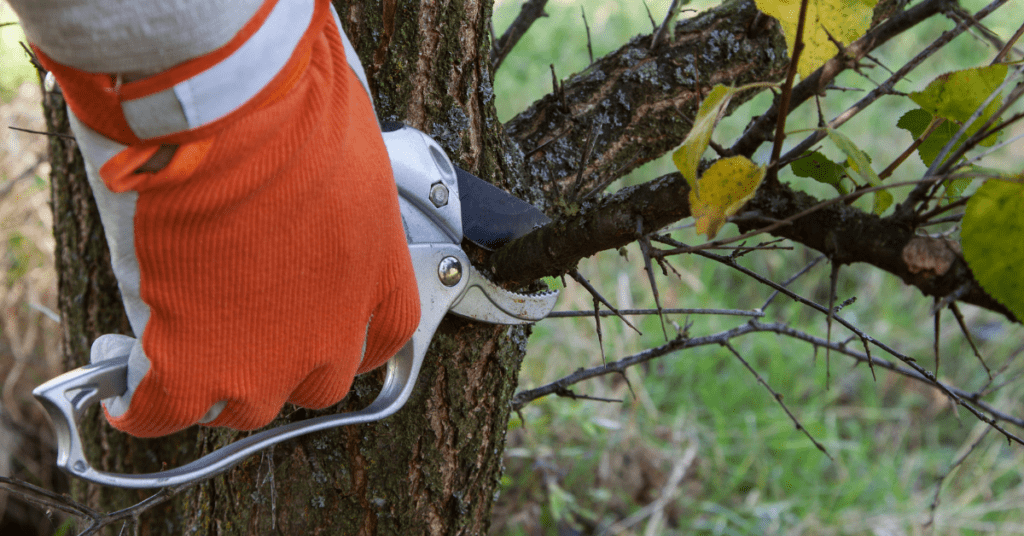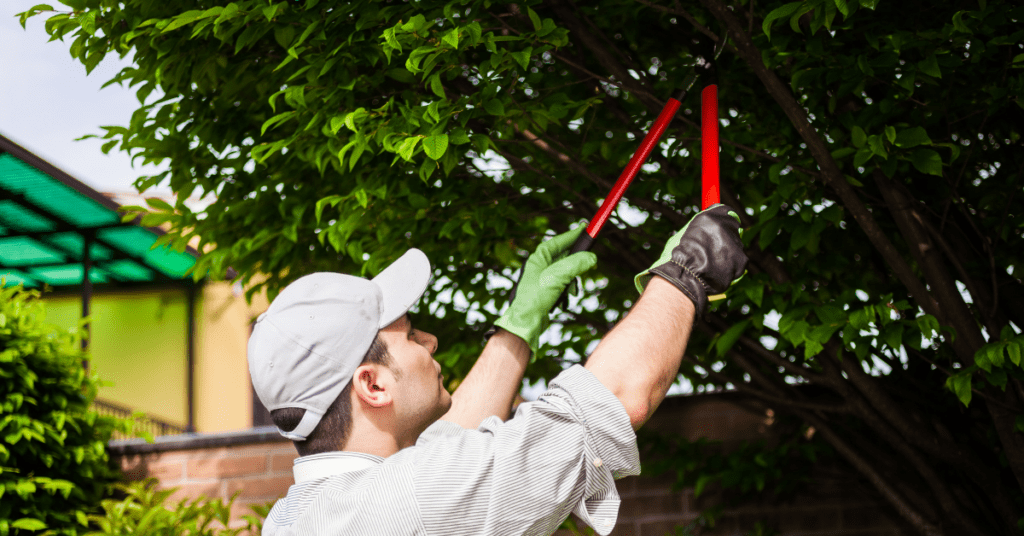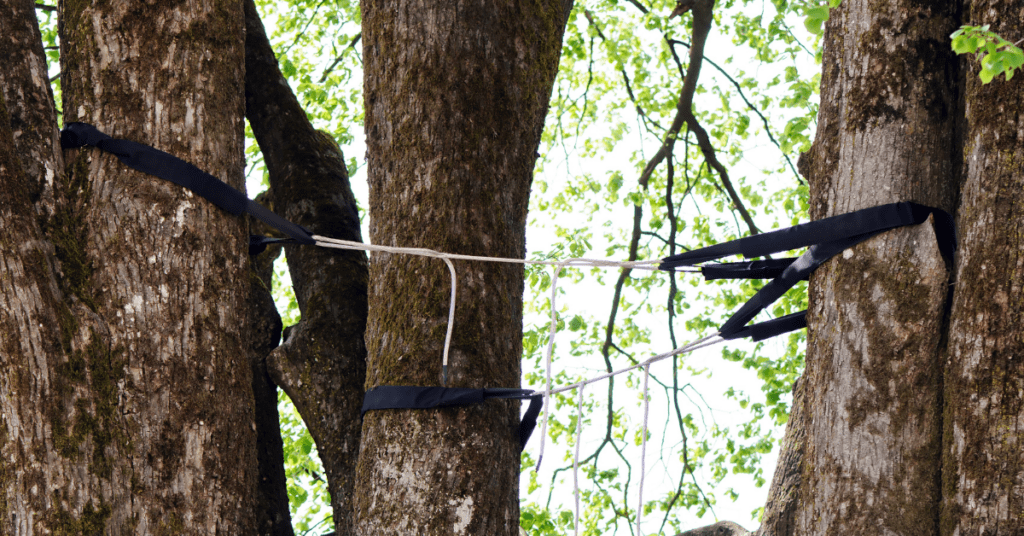However, in Victoria, BC, with its unique coastal climate, storms can pose a significant risk to both people and property. The high winds, heavy rain, and occasional snow common in this region can wreak havoc on trees, causing damage that can be expensive to repair or, in some cases, even lead to injuries or fatalities. It’s crucial for residents here to take proactive steps to protect their trees from potential storm damage. Here are some of the options available to you.
Preventative Pruning

One of the most effective ways to protect your trees from storm damage is through preventative pruning. By removing weak or dead branches, you can reduce the tree’s susceptibility to branch breakage or complete tree failure due to high winds. Thinning large trees can also help decrease wind resistance, allowing the tree to withstand stronger winds. Pruning can also improve tree health and appearance, which is an added bonus.
Pruning is one of the most important aspects of tree maintenance, especially for trees that are susceptible to storm damage. It’s crucial to know the difference between tree trimming and pruning, as understanding these techniques can help you maintain your trees effectively. Pruning is a process of selectively removing branches that are dead, weak, or diseased, as well as those that are crossing or rubbing against each other. Removing these branches can improve the tree’s structure, reduce wind resistance, and promote overall tree health.
When it comes to storm damage prevention, thinning is a pruning technique that can be especially effective. Thinning involves removing branches from the interior of the tree, which can reduce the weight of the canopy and increase air movement through the tree. This, in turn, reduces wind resistance and makes the tree more resistant to high winds.
Tip Weight Reduction

Tip weight reduction is another pruning technique that can be effective in preventing storm damage. This technique involves reducing the length of large branches and/or removing some of the smaller branches at the tips of the larger branch. By doing so, the total weight of the branch is reduced, which can help the branch withstand the added weight of snow and ice during winter storms.
Tip weight reduction is also effective in reducing the surface area of the branch, which decreases the amount of snow that can accumulate on the branch during a storm. This can help prevent the branch from breaking under the added weight of the snow and ice.
Large tree limbs can create a significant load on the tree during a snowstorm, leading to limb failure. One way to prevent this is through tip weight reduction. This involves reducing the total weight of a branch and decreasing its surface area, thereby reducing the load that the branch has to bear. Tip weight reduction can be done by removing branches at the ends or by cutting back large branches to smaller, more manageable ones.
In regions like Vancouver, where snowstorms can significantly impact trees, Seth Stenner, an experienced Vancouver snow removal specialist, emphasizes the importance of incorporating snow load management into tree maintenance practices. According to Stenner, the weight of accumulated snow can cause even well-maintained trees to break or fall, posing a serious risk to property and safety. He recommends regular inspections and proactive measures such as snow removal from tree branches during heavy snowfalls to minimize damage and enhance tree resilience against storm
Cabling or Bracing

Cabling and bracing are techniques that can be used to strengthen weakened or damaged branches or stems. Cabling involves installing a high-strength steel cable or Cobra Dynamic tree bracing system between two or more branches, which helps distribute the weight of the branch more evenly. Bracing, on the other hand, involves adding a rigid support, such as a metal rod, to a weakened or split branch to prevent it from breaking.
Cabling and bracing are usually only recommended for larger, more valuable trees, as the cost of the installation can be quite high. These techniques should only be done by a qualified arborist or tree care professional, as improper installation can actually increase the risk of branch failure during a storm.
Installing a cable or bracing system in a tree can help to strengthen the structure of larger branches and stems. Cabling involves installing a high-strength steel cable between two or more branches, which helps distribute the weight of the branch more evenly. Bracing, on the other hand, involves adding a rigid support, such as a metal rod, to a weakened or split branch to prevent it from breaking. Both techniques can be effective in preventing storm damage, but they should only be done by a qualified professional.

Remove the Tree
Tree removal is the last and final option for preventing storm damage. As mentioned, healthy trees provide numerous benefits to our environment and our communities. However, in some cases, it may be necessary to remove a tree that is at high risk of causing damage during a storm. Learn to recognize the 6 Signs It Might Be Time To Remove Your Tree, understand How Do You Tell If a Tree Needs to Be Cut Down?, and determine whether you should Remove a Tree Close to the House.
For residents of Victoria, BC, considering tree removal might be particularly relevant due to the region’s coastal storms. For instance, the proximity of trees like the iconic Garry Oak to residential properties could necessitate removal if they’re significantly leaning, showing large dead or decayed branches, or if their root systems have been compromised, posing a risk during stormy weather common to the area.
Tree removal should only be done by a qualified arborist or tree care professional, as improper removal can be dangerous and cause damage to surrounding property. A professional will have the tools, training, and experience to remove the tree safely and efficiently, while minimizing the impact to the surrounding environment.
If the safety of people or property is at high risk because of a large or dangerous tree, removing it before it fails may be the best option. Although it’s not always the ideal solution, removing a tree can prevent injuries or fatalities, and make way for a new. and healthy tree to take its place. It can also prevent significant damage to your property. Learn about what happens if a tree is too close to your house and the best time of year to remove trees to ensure a safe and effective removal process. Tree removal should always be done by a professional to ensure that it’s done safely and properly.
Hardeep Gill, a seasoned Burnaby asphalt shingle roofer, stresses the importance of managing trees near homes to protect roofing systems. In storm-prone areas like Victoria, BC, he notes that overhanging branches can damage roofs during storms, leading to expensive repairs. Gill advocates for regular tree pruning and inspections to prevent damage, emphasizing the need to check for decay or instability in trees close to homes. His advice highlights the critical link between tree health and roof integrity, urging homeowners to prioritize tree care to avoid roof damage.
Preventing storm damage to your trees is essential to maintaining the health and beauty of your property, as well as ensuring the safety of your family and neighbors. By being proactive and taking steps to protect your trees before the next storm, you can save yourself time, money, and hassle in the long run. Remember to always work with a qualified professional to ensure that any preventative measures are done safely and effectively. By doing so, you’ll be able to enjoy the benefits of healthy, beautiful trees for years to come.
Protecting your trees from storm damage is crucial to ensure their health and longevity, and to prevent potential harm to people and property. If you need help with preventative pruning, tip weight reduction, cabling or bracing, or any tree services in Victoria, BC, our team of expert arborists at Anchor Tree is here to help. We have the experience and tools necessary to protect your trees from potential storm damage, and to ensure that any necessary removal is done safely and efficiently. Contact us today to schedule a consultation and learn more about how we can help you keep your trees healthy and safe.


